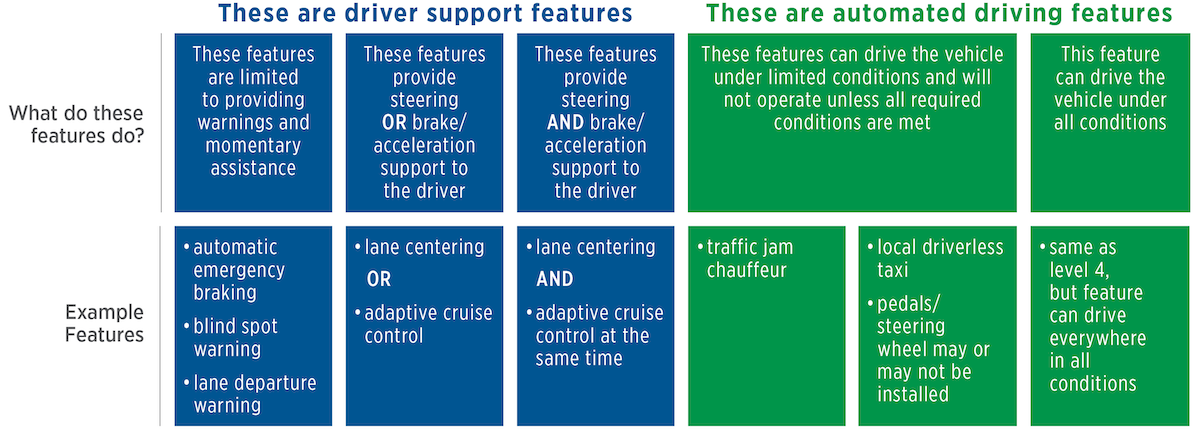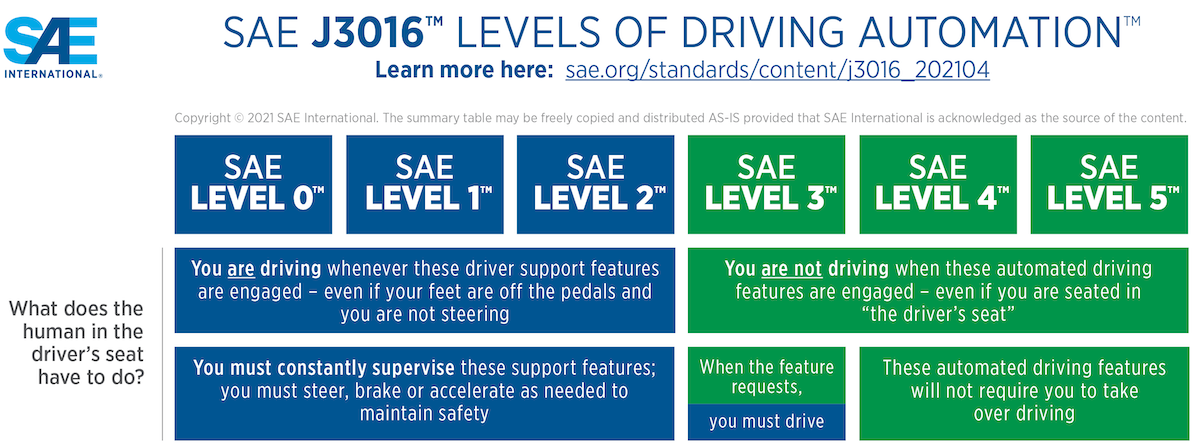There is some news about “autonomous driving vehicle accidents” happening in Taiwan recently. The journalists must take the responsibilities of misleading the public with incorrect covers, and the audience should understand the definition of new technologies… The cars on sales nowadays are equipped with ADAS; Because of the wording “assistance”, it has no correlation with “autonomous driving technology”, which means drivers’ can’t move hands away from the steering wheel to do other things or even taking naps. The maximum safety level of these cars is just L2, and even if carmakers introduce cars claimed to be L3, I still recommend you guys to regard it as L2, or the risk of driving will be increased. As for the real autonomous driving technology is classified as L4 and L5 that is developed from the aspect of robots; The term “Autonomous” means autonomous moving, which is an AI brain with the capability of self-learning of the driving environments that can keep improving the skills of autonomous driving by accumulating mileage. Apparently, this is completely different from the assistant features of ADAS. Even though the SAE had defined these 5 levels for the reference of R&D personnel in 2014, but by the over-exaggerated marketing of carmakers and false information circulation among the public, the term “autonomous driving” has been misused. In this atmosphere, the pinnacle institution of global standard of car design – Euro NCAP had begun using the new definition of Driving Automation that is easier for consumers to understand…
- I am responsible.
- We are responsible.
- The vehicle is responsible.
Although Euro NCAP didn’t compare these three levels to SAE’s classification, I tentatively classify it as below (not completely precise) …
- L0 ~ L2: I am responsible.
- L3: We are responsible. (It means that driver and passengers are all responsible.)
- L4 ~ L5: The vehicle is responsible.
To view from the classification of Euro NCAP, it’s clear that when cars under L3 run into accidents, the driver takes all of the responsibility. At the same time, it’s the root cause why L4/L5 cars still can’t be completely commercialized for production (when accidents happen, carmakers take all of the responsibility).

Anyway, when the L4/L5 technology really become commercialized one day, can it terminate more than 90% of traffic accidents caused by human factors as the analysis shown by the government? There is a classic case of “Survivorship bias” called by the descendant happened in the World War II for reference… On the airplanes flying back after the air combat, the Allies found the areas that had been hit by the enemy fire are so much in common, so they hired a mathematician to analyze how to decrease the possibility by enhancing the areas hit by gunfire; However, this mathematician told The Allies that their logic of thinking is wrongly upside-down. The areas that got hit on these survived airplanes are not fatal obviously, but the key fatal areas possibly got hit on airplanes that didn’t come back should be enhanced. This case told us that before the autonomous driving technology can let vehicles take full responsibility of the driving safety, the over-simplified thinking of the urge to remove human factors so as to prevent 90% traffic accidents from happening will be very dangerous. To compare human brains to the most advanced AI autonomous driving technology nowadays, there are still so many advantages of human brains when driving cars…
- The advantages of human brains: Intuitive thinking, can deal with complicated driving conditions immediately and effectively, sufficient foreknowledge, strong recognition capability of objects, free of ODD limitation.
- The advantages of AI autonomous driving: fatigueless, won’t space out, won’t drunk driving, can deal with multiple situations at the same time, the decision won’t be influenced by emotions.

The benefits and disadvantages can compensate each other when comparing human brains and AI autonomous driving; Especially when the driver is in good mental and health conditions and concentrates on driving, their intuitive thinking and spontaneous reaction can often prevent accidents from happening, and this the part that autonomous driving technology nowadays needs to be improved; However, it’s simple on the surface, but there are still so many technological bottlenecks for autonomous driving R&D personnel to break through. There must be no grey area from “We are responsible” to “The vehicle is responsible” because these are two completely different concept of system design that it must let consumers to fully understand. Any carmaker or salesperson that promotes the “partial autonomous driving function” or boasts the function of ADAS must take the responsibilities of all the possible consequences for drivers turning on ACC and taking naps.